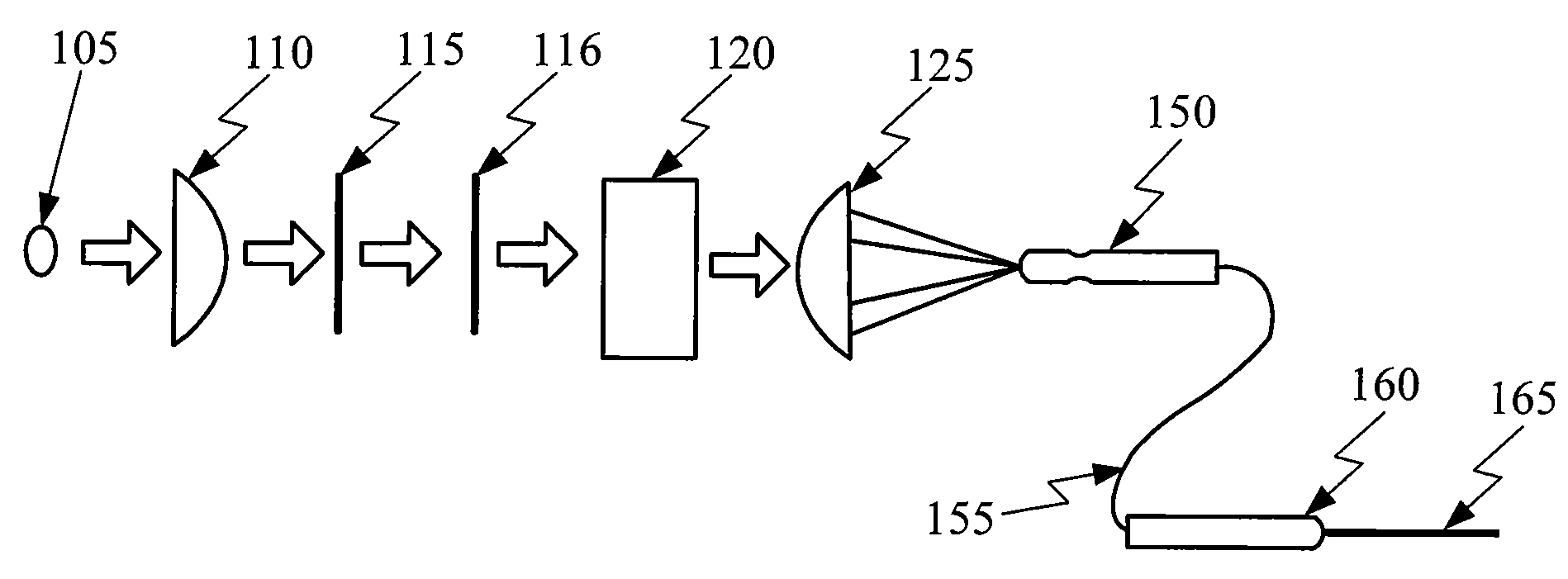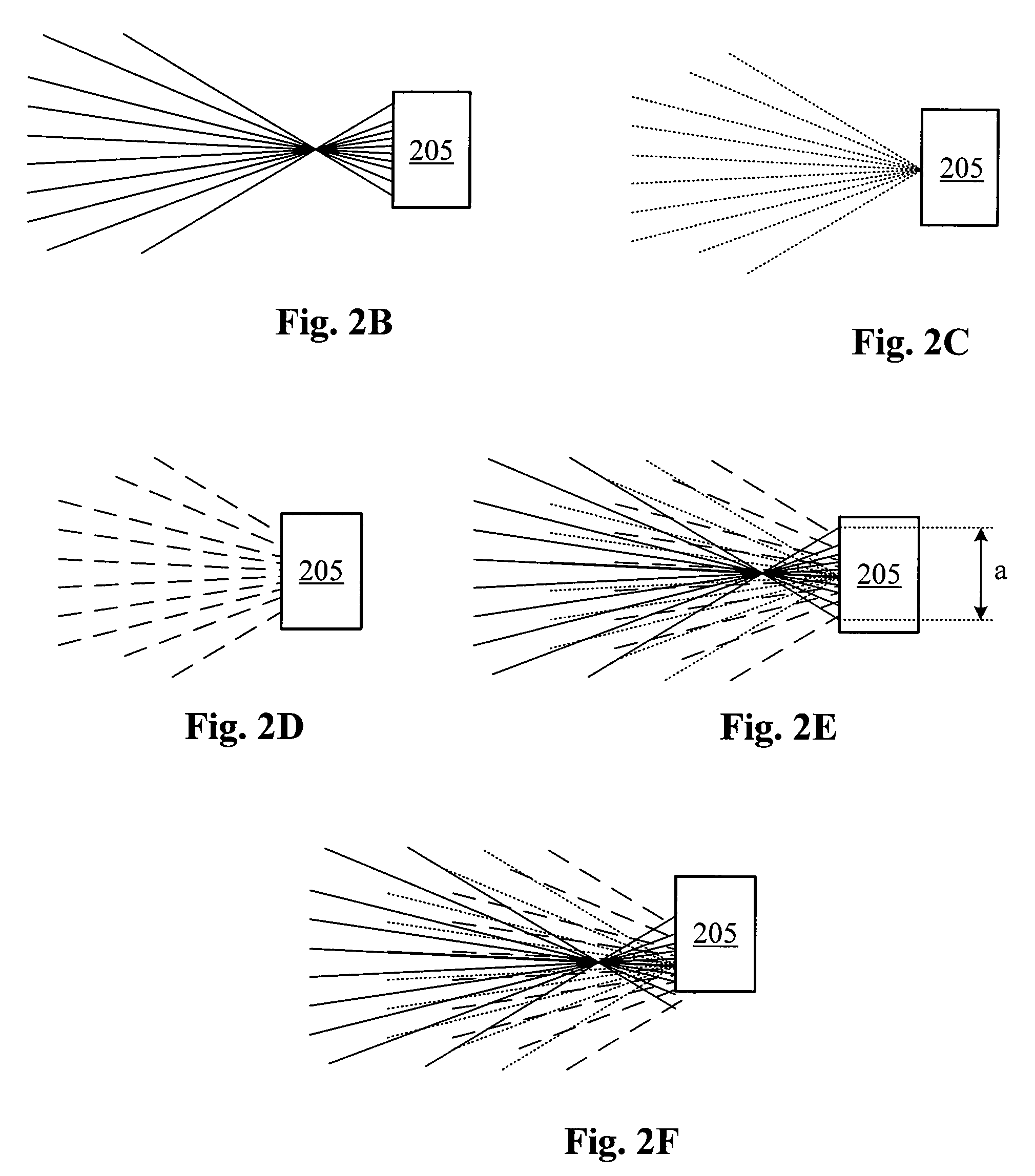Ophthalmic Endoilluminator with Hybrid Lens
a hybrid lens and ophthalmology technology, applied in the field of ophthalmology, can solve the problems of color and brightness non-uniformities in the light emitted into the eye, shrinkage of the vitreous body, and retinal tear or hole formation
- Summary
- Abstract
- Description
- Claims
- Application Information
AI Technical Summary
Benefits of technology
Problems solved by technology
Method used
Image
Examples
Embodiment Construction
[0022]Reference is now made in detail to the exemplary embodiments of the invention, examples of which are illustrated in the accompanying drawings. Wherever possible, the same reference numbers are used throughout the drawings to refer to the same or like parts.
[0023]FIG. 1 is an unfolded view of an ophthalmic endoilluminator according to an embodiment of the present invention. In FIG. 1, the endoilluminator includes light source 105, collimating lens 110, optional cold mirror 115, optional hot mirror 116, attenuator 120, condensing lens 125, connector 150, optical fiber 155, hand piece 160, and probe 165.
[0024]The light from light source 105 is collimated by collimating lens 110. The collimated light is reflected and filtered by optional cold mirror 115 and / or transmitted and filtered by optional hot mirror 116. The resulting beam is attenuated by attenuator 120 and focused by condensing lens 125. The focused beam is directed through connector 150 and optical fiber 155 to probe 16...
PUM
 Login to View More
Login to View More Abstract
Description
Claims
Application Information
 Login to View More
Login to View More - R&D
- Intellectual Property
- Life Sciences
- Materials
- Tech Scout
- Unparalleled Data Quality
- Higher Quality Content
- 60% Fewer Hallucinations
Browse by: Latest US Patents, China's latest patents, Technical Efficacy Thesaurus, Application Domain, Technology Topic, Popular Technical Reports.
© 2025 PatSnap. All rights reserved.Legal|Privacy policy|Modern Slavery Act Transparency Statement|Sitemap|About US| Contact US: help@patsnap.com



